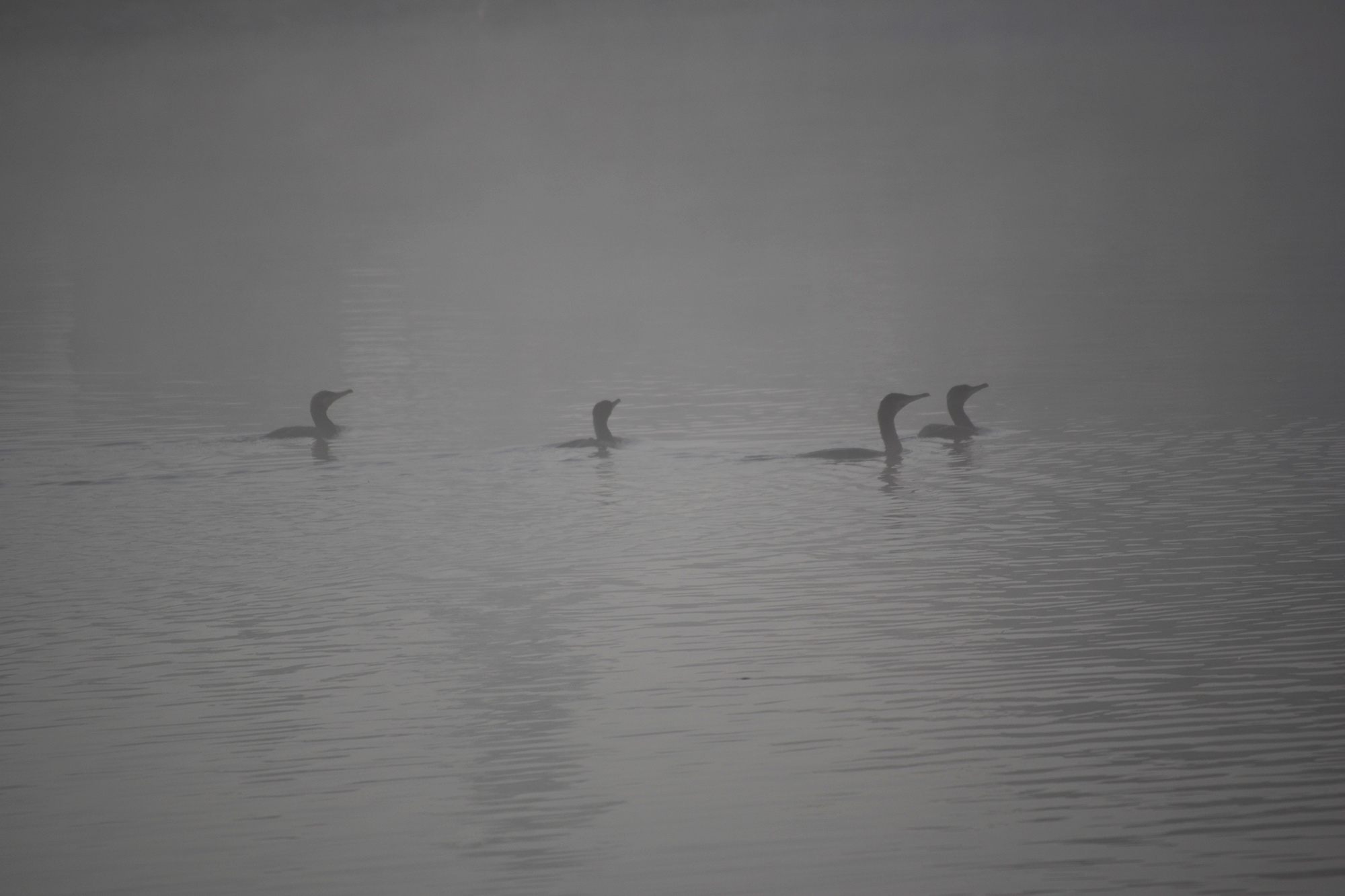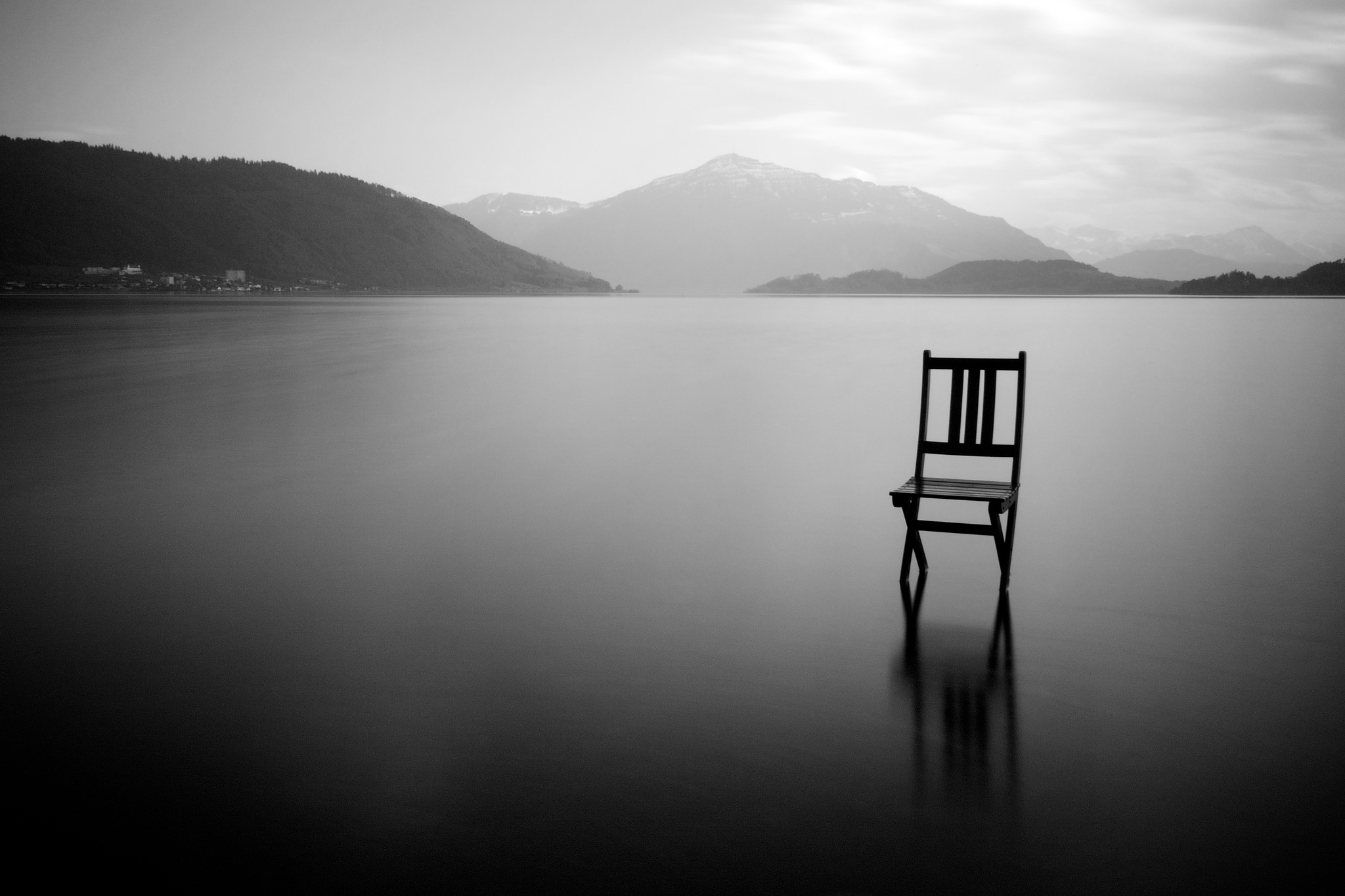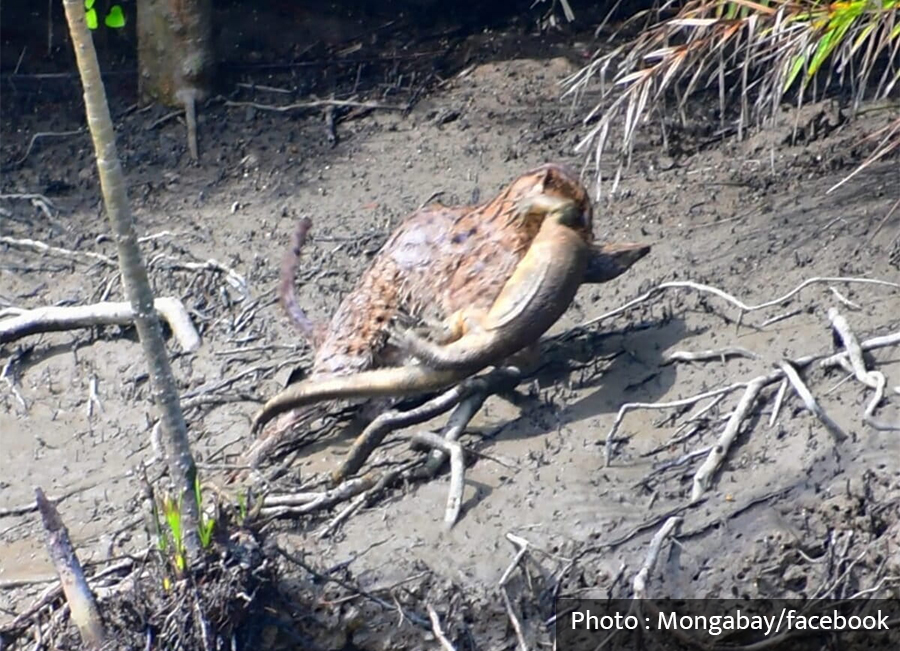The mist made the light from the solar lamp posts on the other side of the pond blurry. Somewhere a fish leapt out of the water and fell back in. It was too dark and misty to see where the fish had jumped. Only the sound told me it was somewhere near.
As I watched, a pair of coots came out of the mist toward the water’s edge, as discreet as a flotilla approaching enemy shore. Their necks moved back and forth as they propelled themselves forward. An ever-widening ‘V’ followed in their wake. I could barely make out the white line that runs down their forehead to their beaks.
As I walked on along the edge, I noticed the silhouette of a tree. It was like an apparition, an optical illusion created by the mist. As I neared the tree, I heard my first bird sounds of the morning. But I couldn’t see them yet. An entire world existed behind the mist.
The pond was Taudaha. Darkness and mist made Taudaha seem wild and big, even though I knew its exact dimensions from earlier visits. When day finally broke, I could see that it had shrunk. Restaurants and “resorts” encircled the pond, encroaching on the lake’s shore, erecting thatch-roofed huts for lovebirds where once coots rummaged and egrets meditated on their prey. It seemed only a matter of time before homes, cafes and restaurants would squeeze Taudaha dry.
(Above) No one is more grateful for this water body than weary birds that arrive here to escape the harsh winters of Mongolia and Tibet. (Opener) Darkness and mist made Taudaha seem wild and big, even though I knew its exact dimensions from earlier visits.
Mythology traces Taudaha’s origin back to when Manjushree, a Tibetan deity, sliced the hill at Chobar with his sword. The water of the lake that was Kathmandu Valley began draining out through this cleft. Seeing this, the nagas, serpents that lived in the lake, implored Manjushree to stop the destruction of their home. The deity created Taudaha as compensation to the displaced nagas. The serpents moved to the pond, where they are believed to live to this day.
It is fair to say that mythology and religion have saved Taudaha from ruin. Hindus revere snakes, so the abode of snakes is a sacred place. There are several naga shrines along the pond, which like any shrine are both venerated structures as well as reminders to uphold the place’s sanctity.
As a result, people did not treat Taudaha as a dumping site, a fate that befalls most water bodies in Kathmandu. So snakes, which are seen frequently here, still enjoy a more or less unspoiled habitat. Other beneficiaries include fish, which were released here by people as an act of benevolence. No one is more grateful for this water body than weary birds that arrive here to escape the harsh winters of Mongolia and Tibet. Some winter here, others rest and feed before continuing further south to the Terai.
Mythology traces Taudaha’s origin back to when Manjushree, a Tibetan deity, sliced the hill at Chobar with his sword.
Taudaha is like a small autonomous region surrounded by a rapacious superpower. Every time I visit, there are a couple of new restaurants. I wonder for how long the little pond will resist the tide of human greed. The precariousness of its existence and the uncertainty of its future make it even more appealing. So watching a little kingfisher skimming over the water warms your heart. An egret stretches its neck, poised to pounce on a fish, and you freeze so as not to disturb it. A pair of ducks floats by and you feel happy that they have a place to do so. There is profound solace in being in a place that attracts such beauty.
What a deity gave to serpents as compensation now offers consolation to people. Taudaha is as much a haven for snakes and birds as for anyone who doesn’t have a piece of the natural world around them anymore. As you watch the birds go about their routine of feeding and preening, you forget the road with its maddening traffic, the filth of the city, the loss of places like Taudaha. And the pond inspires hope. The fact that people have more or less left a place untouched in order to allow snakes, real and mythological, their space makes you hopeful that a bird exhausted from flying over the Himalayas will have a place to rest in for many years still.
Checklist
As you watch the birds go about their routine of feeding and preening, you forget the road with its maddening traffic, the filth of the city, the loss of places like Taudaha.
Getting there
Taudaha is 10 km from Sahid Gate. Turn south (left) at the Kalimati intersection (opposite the vegetable market) and continue towards Tribhuvan University. After crossing the Ring Road, keep going on the road along the Bagmati towards Chobar. Taudaha is approximately 2 km from Chobar.
There is another road that begins at the bridge in Nakkhu. Turn right immediately after crossing the bridge. There are several turns on this route so ask locals for directions. This road takes you to the new bridge at Chobar. Cross the bridge and turn left towards Taudaha.
While you are there
Birdwatching
Taudaha is one of the last unpolluted wetlands in the Kathmandu Valley. It is therefore the last refuge of waterbirds, both local and migratory. This makes birdwatching here a thoroughly rewarding experience as the chance to spot some rare species is high. And you need not be a seasoned birder to do it. Birdwatching here is almost sedentary. You can sit on the stone wall along the shore and watch birds like Lesser Whistling Duck, Common Coot, Falcated Duck (rare), Mallard, Spot-billed Duck, Common Teal, Northern Pintail, Ruddy Shelduck, several species of pochards, Steppe Eagle and the Great Cormorant. The birds tend to congregate near the small island in the northeastern corner of the pond.
Hikes
The hills to the pond’s southwest offer some good hikes. You can either climb to the small white house on the hill directly west of Taudaha or go to the monastery south of that hill, which is a little higher. Both destinations have panoramic views of the mountains.
For more determined hikers there is the Champadevi shrine. Hiking there from Taudaha is much more taxing, so you will need more time. If you plan to do this hike, go in a group and start as early as possible.
Pharping
Taudaha is on the way to the medieval town of Pharping. There is a full day’s worth of sightseeing in Pharping. It ranges from ancient monasteries and temples to Nepal’s first hydropower station, built over a century ago. If you decide to go to Pharping, the Sheshnarayan Temple is highly recommended.
***
Also read
Kuri: On Bear-Controlled Trails
Top five destinations you need to visit to beat winter in Nepal





















